27 October 2017 - Session 2
-
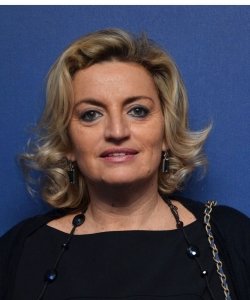
Silvia Burini
Exhibiting Russian Art at the Ca’ Foscari
Beginning in 2010 the University of Ca 'Foscari in Venice has started a long period of the Russian art exhibition, full of significant events (over 30). The first exhibition, "Russia! Memory Mystification Imagination," focused on two private Italian collections, which became "public" due to a patient documentary research, cataloguing and a series of exhibitions. Subsequent opportunities have emerged from collaborations with leading institutions in the Russian Federation, the Ministry of Culture in ROSIZO, major Russian museums, art academies, collectors and foundations, individual artists and art collectives. These collaborations have allowed the CSAR, founded a year after "Russia!", to build an effective network of contacts, including with a number of regional museums in the Russian Federation. Many exhibitions have been realized within the university’s exhibition framework, allowing specific and innovative experiments involving the use of the work of art, with widespread and original uses of new multimedia technologies. Moreover, the CSAR exhibitions system has touched centers in other cities (in Moscow and Milan, for example) and additional Venetian centers (Querini Stampalia Foundation, Veneto Institute of Sciences Literature Arts, former St. Catherine's church). Such a broad range of activity fully corresponds to the CSAR objectives, taking into account western viewpoints of dealing with some of the main issues in Russian art of the twentieth and twenty-first century, with critical outcomes and historiography of recognized value.
-
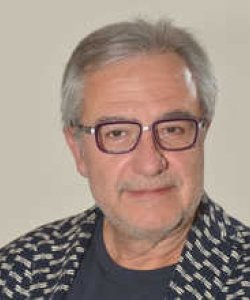
Giuseppe Barbieri
Exhibiting Russian Art at the Ca’ Foscari
Beginning in 2010 the University of Ca 'Foscari in Venice has started a long period of the Russian art exhibition, full of significant events (over 30). The first exhibition, "Russia! Memory Mystification Imagination," focused on two private Italian collections, which became "public" due to a patient documentary research, cataloguing and a series of exhibitions. Subsequent opportunities have emerged from collaborations with leading institutions in the Russian Federation, the Ministry of Culture in ROSIZO, major Russian museums, art academies, collectors and foundations, individual artists and art collectives. These collaborations have allowed the CSAR, founded a year after "Russia!", to build an effective network of contacts, including with a number of regional museums in the Russian Federation. Many exhibitions have been realized within the university’s exhibition framework, allowing specific and innovative experiments involving the use of the work of art, with widespread and original uses of new multimedia technologies. Moreover, the CSAR exhibitions system has touched centers in other cities (in Moscow and Milan, for example) and additional Venetian centers (Querini Stampalia Foundation, Veneto Institute of Sciences Literature Arts, former St. Catherine's church). Such a broad range of activity fully corresponds to the CSAR objectives, taking into account western viewpoints of dealing with some of the main issues in Russian art of the twentieth and twenty-first century, with critical outcomes and historiography of recognized value.
-
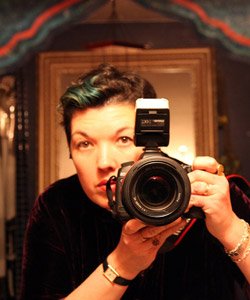
Anna Frants
Contemporary Russian Art on the International Scene
At present, the place of contemporary Russian art on the international scene is negligible. Contemporary Russian art did not gain a stature in the art world that would equal that of Western art for two reasons. The first has to do with the fact that Russia had missed 50 years of artistic development, and the second is that the Russian art market has existed only for a very short time, since the fall of the Soviet Union.
Nonconformist art and Sots Art in particular, are an exception in this state of things. Nonconformism is the most renowned post-war Russian art movement in the West, because it is connected to the history of resistance to official Soviet aesthetics, and because it has been made accessible to western audiences through the Norton and Nancy Dodge Collection at Zimmerli Art Museum at Rutgers University and the efforts of the Kolodzei Art Foundation.
This situation has been improving over the last several years, as new forms of art emerged that have a greater potential than traditional forms -- for instance, new media art and the art that uses new technologies. This technological turn in art is boosted by the changing nature of perception by young generations enacted through the infiltration of our everyday life by technologies and museums’ interest in exhibiting and acquiring new media art. These modern-day trends are developing on the backdrop of a rich history of Russian innovations in the 20th century.
-
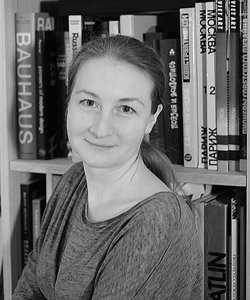
Julia Tulovsky
The Challenges of Exhibiting Russian Contemporary Art in America
This talk will address the exhibition history of Soviet nonconformist and contemporary Russian art in the United States and discuss the challenge of curatorial presentation of such material and its perception by the public. It will briefly consider major shows that presented nonconformist art to American audiences, starting with the groundbreaking exhibition New Art from the Soviet Union, organized in 1977 in Washington, D.C., by Norton Dodge and Alison Hilton. The talk will discuss changing attitudes towards Russian art in America depending on particular historical circumstances and political climate. It will give a brief outline of the venues available for presenting Russian art, including galleries and museums. The presentation will also analyze the advantages and disadvantages of presenting Russian contemporary art in the US based on the experience of working with the Norton and Nancy Dodge Collection, a major resource for exhibiting and researching Soviet nonconformist art in America. Housed at the Zimmerli Art Museum at Rutgers University, the Dodge Collection is the largest collection of its kind in the world. Because of its proximity to New York City and dual status as a study center in a major university as well as an important cultural entity within the local community, the Zimmerli Museum and the Dodge Collection present an important and multifaceted case study for addressing the perception of Russian art by art professionals, academics, students, and the general public. The paper will also open a discussion about strategies for exhibiting and popularizing Russian contemporary art in America and possible ways of its further integration into global art history.
-
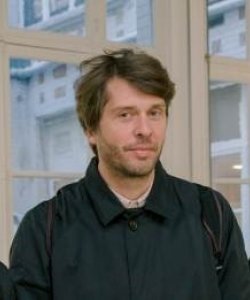
Nicolas Liucci-Goutnikov
Displaying a collection of Russian Art: The Challenges of Singularity
From September 2016 to March 2107, the Centre Pompidou presented a donation of more than 250 works assembled through the generosity of the Vladimir Potanin Foundation and of several collectors, artists, and estates. This exhibition offered a panorama of some forty years of contemporary art from the USSR and post-Soviet Russia, from the late 1950s until the early 2000s, including the major movements of non-official art, from non-conformism to conceptualism. This large donation brought an important addition to the Museum’s holdings, which reflect the significant presence of Russian and Soviet artists in Paris throughout the 20th century, including such names as Marc Chagall, Natalia Goncharova, Vasily Kandinsky, and Mikhail Larionov. It allows the Centre Pompidou to unfold various aspects of the history of modern and contemporary art in the USSR and Russia, from 1905 until today in the display of its own collection. It also requires the museum to face the singularity of a context in which art had to face ideological imperatives of a state-controlled system for decades. This paper will examine the problem of how to show this singularity though collection displays and, furthermore, how to articulate in a global narrative its specific history with other histories told by the collection of the Centre Pompidou.
